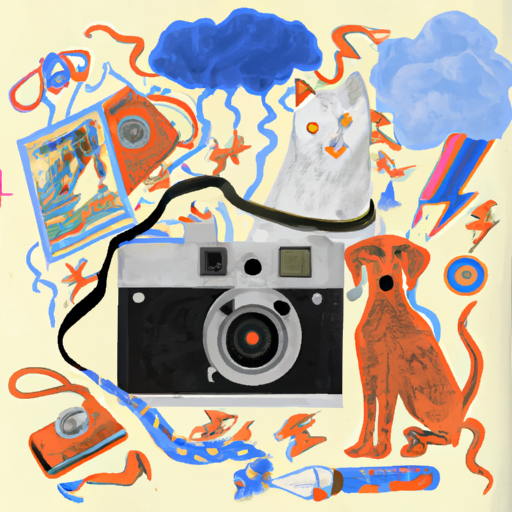As an online journalist, I fully understand the importance of getting the facts right, especially when it comes to the wellbeing of our beloved pets. Dogs, the cherished family members they are, can sometimes exhibit fear and anxiety. Understanding these fears and knowing how to address them is essential for ensuring your pet lives a happy and healthy life. In this deep dive, we’ll explore the question: what are dogs afraid of?
Table of Contents
- Common Fears and Phobias in Dogs
- How to Recognize Fear in Dogs
- How to Help Your Dog Overcome Fear
- Prevention and Treatment
- Frequently Asked Questions
Key Takeaways
- Dogs can develop fears from a variety of sources, including loud noises, unfamiliar people or animals, and certain situations.
- Recognizing fear in dogs involves understanding their body language and behavior.
- Helping a dog overcome fear often requires patience, understanding, and possibly professional help.
- Prevention is key to avoiding fear development in dogs.
Common Fears and Phobias in Dogs
Dogs can be afraid of many things, but some fears are more common than others. According to the American Kennel Club, these are some of the most common fears and phobias in dogs:
- Loud noises: Thunderstorms, fireworks, and other loud noises can cause anxiety in dogs. This is referred to as noise aversion or noise phobia.
- Unfamiliar people or animals: Dogs can be fearful of people or other animals they are not familiar with. This can be due to a lack of socialization or past traumatic experiences.
- New environments: Moving to a new home, visiting the vet, or going to a dog park for the first time can be stressful for dogs.
- Separation: Dogs can develop separation anxiety, fear of being left alone, often leading to destructive behavior.
You can read more about common fears in dogs here.
How to Recognize Fear in Dogs
Understanding your dog’s body language can help you recognize when they are afraid. Common signs of fear in dogs include:
- Panting and shaking
- Whining or barking
- Pacing or trying to escape
- Hiding or cowering
- Showing the whites of their eyes (whale eye)
For more detailed information about recognizing fear in dogs, check out this guide.
How to Help Your Dog Overcome Fear
Helping your dog overcome their fears is a process. It requires patience and understanding, and in some cases, professional help may be necessary. Here are some steps you can take:
- Understand the fear: Before you can help your dog, you need to understand what is causing their fear. It may be helpful to keep a journal of when your dog exhibits fear and the circumstances surrounding it.
- Provide a safe space: If your dog is afraid of something in their environment, provide a safe space where they can escape to. This could be a crate, a separate room, or a quiet corner of the house.
- Use positive reinforcement: Reward your dog for calm behavior. Treats, toys, and praise can all be effective rewards.
- Consult a professional: If your dog’s fear is severe or causing them distress, it may be time to consult a professional. A dog behaviorist or a veterinarian can provide guidance and treatment options.
For more details on how to help your dog overcome fear, you may want to read here.
Prevention and Treatment
Preventing fears from developing in the first place is often easier than treating them. Here are some tips:
- Socialize your puppy: Early socialization can help prevent fears of unfamiliar people, animals, and environments. Expose your puppy to a variety of sights, sounds, and experiences in a positive and controlled way.
- Create positive experiences: Associate potentially scary situations with positive experiences. For example, pair thunderstorm sounds with treats or playtime.
- Desensitization and counter-conditioning: These are treatment methods used to change a dog’s response to something they fear. They involve gradually exposing the dog to the fear-inducing stimulus while associating it with something positive.
You can read more about prevention and treatment of fears in dogs here.
Frequently Asked Questions
-
Why is my dog suddenly scared of something?
Sudden fear in dogs can be due to a variety of reasons. It could be a result of a traumatic experience, a health issue causing discomfort, or even aging changes affecting their senses or cognition. It’s best to consult a vet if you notice sudden changes in your dog’s behavior. -
Can dogs sense their owners’ fear?
Dogs are incredibly attuned to their owners’ emotions and may respond to your anxiety or fear. Try to remain calm and confident to help reassure your dog. -
Do dogs grow out of fear?
Not necessarily. While some puppies may outgrow certain fears as they become more confident and experienced, others may carry these fears into adulthood. Early socialization and positive experiences can help prevent fears from developing.
In conclusion, understanding your dog’s fears and how to address them can significantly improve their quality of life. Remember, patience, understanding, and consistency are key. If you’re ever unsure, don’t hesitate to seek help from a professional.



